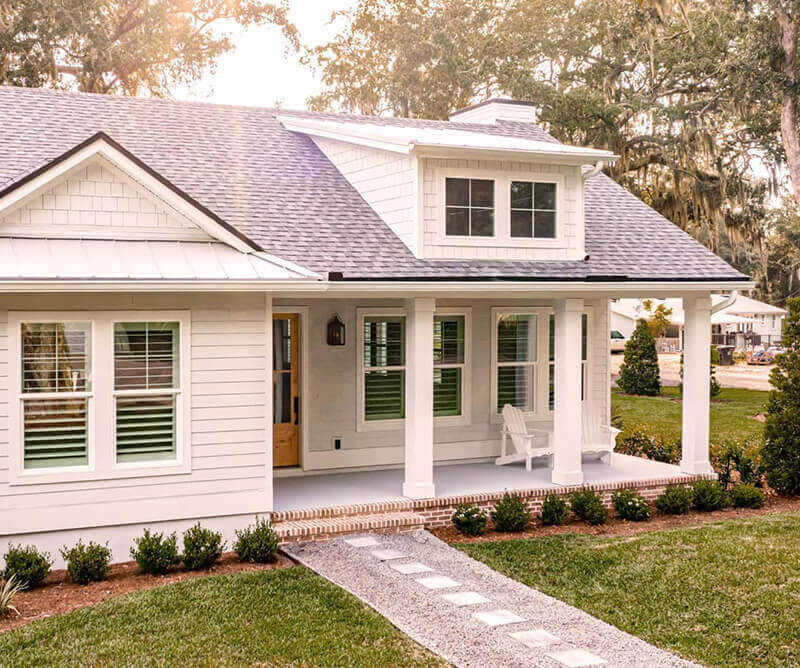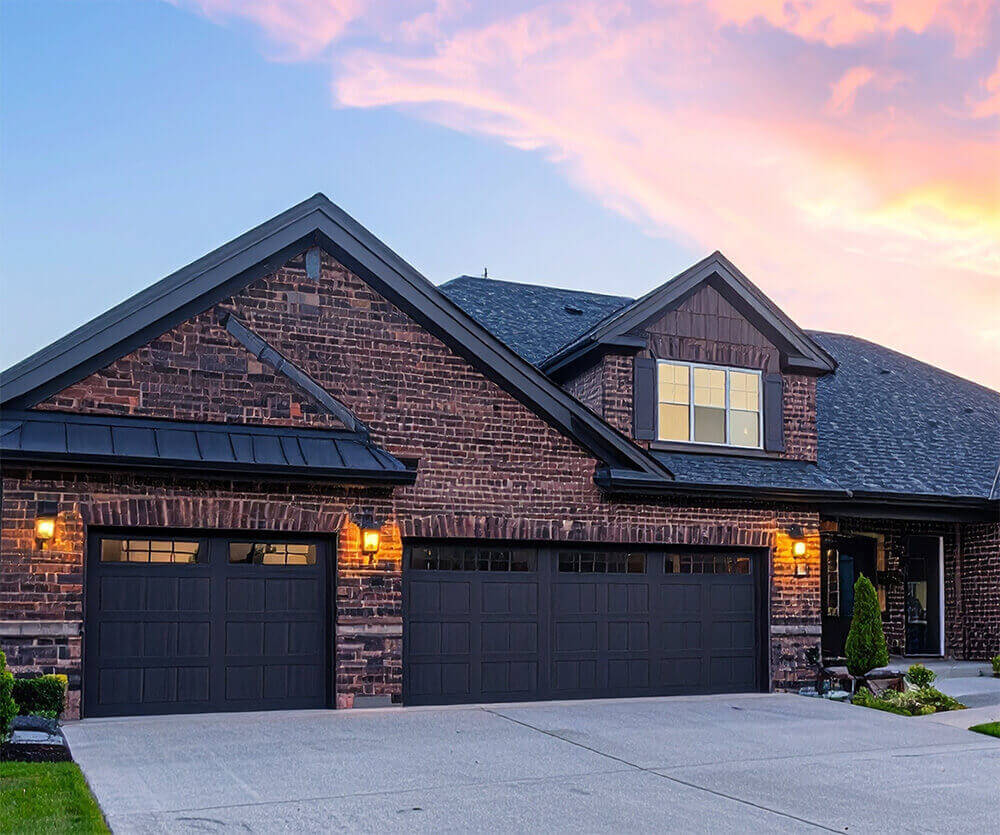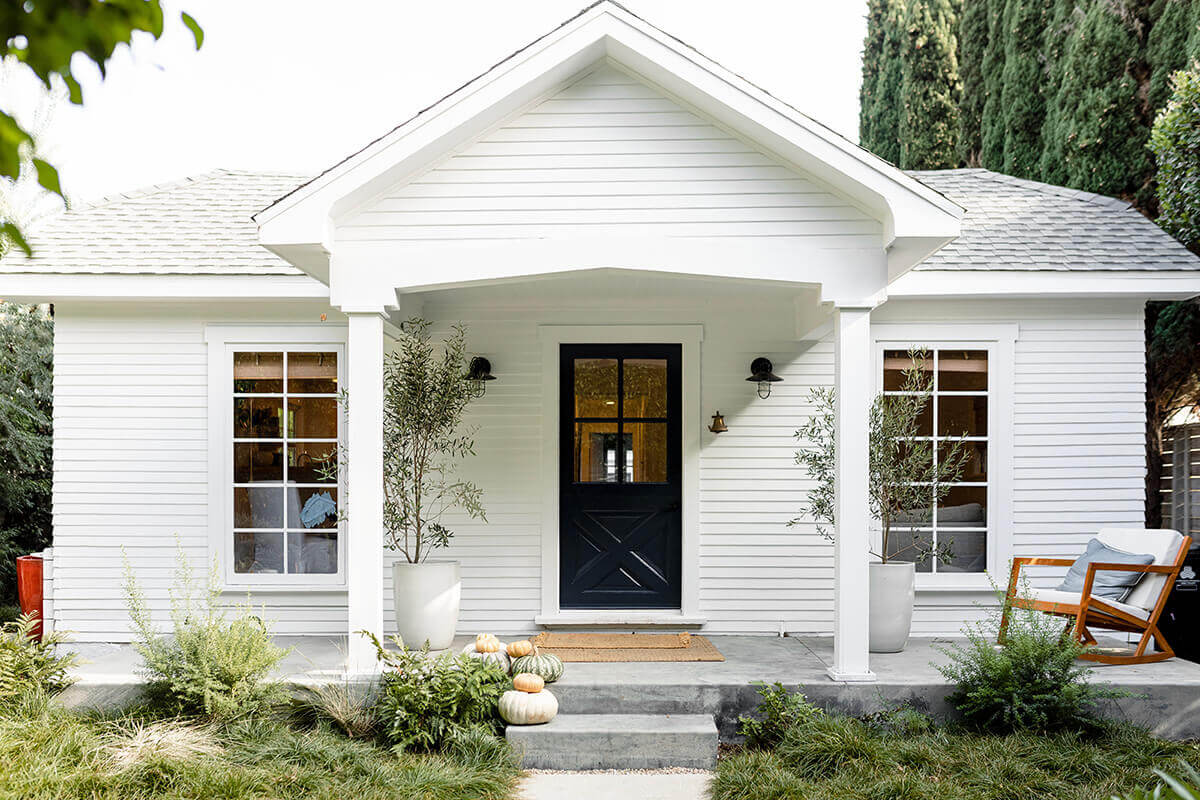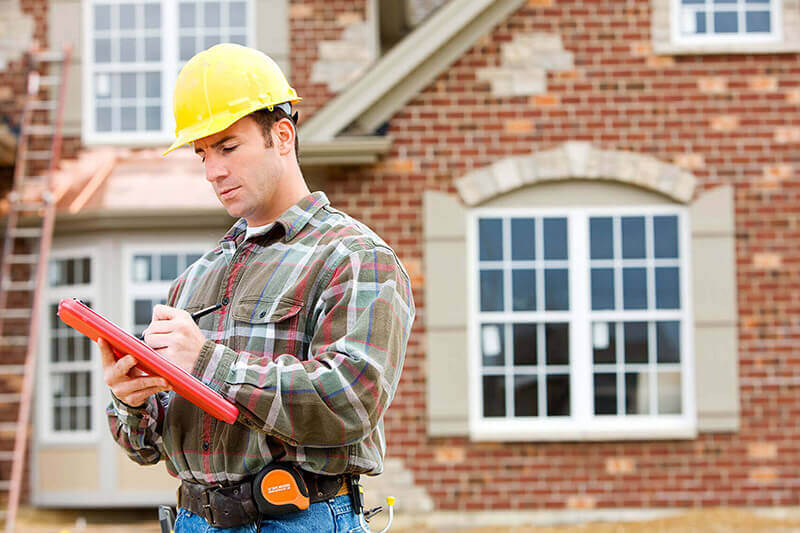What is the average down payment on a house?
What is the average down payment on a house? The answer is subject to many factors, including the home price, mortgage interest rates, available down payment assistance programs, closing costs, credit score, location, and more. There are some general guidelines on how much a down payment should be, but none are set in stone or one-size-fits-all.
A two-story white house with a vibrant garden exemplifies homeownership and the considerations for the average down payment on a house.
In this post, we’ll examine the average down payment on a house and go through what percentage is most suitable for you in light of all the factors at play. We’ll also cover whether larger down payments are a good idea and break down the classic 20% down payment rule.
How much should you put down on a house?
According to Forbes , the average down payment on a house in America is 14.4%. This works out to an average median down payment of $34,248. Of course, the average down payment varies from state to state and according to the buyer’s financial situation.
A primary criterion for how much you should set aside for a down payment is what kind of home loans you use to secure funding. Some of the most typical loans and percentages they command are as follows.
-
Banks, credit unions, mortgage companies, and other private lenders are the most common sources for funding a down payment. First-time homebuyers usually pay a minimum 3% down payment. Repeat buyers, who theoretically have more cash at their disposal, could be required to pay no less than 5%.
The lender may impose certain conditions on how much you’ll pay. If your credit score is below 620, the lender may hike the percentage up to cover the assumed risk. Keep in mind that with any down payment below 20%, the lender will require you to pay for private mortgage insurance (PMI) to back their loan.
-
Unlike conventional loans, VA loans are backed by the U.S. government. They’re available for active and former members of the Armed Forces, including the National Guard, and surviving spouses if they qualify. If all requirements are met, no down payment is necessary with a VA loan.
-
USDA loans are also backed by the government. They’re meant to encourage moving to rural or agricultural areas and to stimulate development in those areas. Again, government-backed USDA loans don’t require you to make a down payment.
-
Federal Housing Administration (FHA) loans are backed by the government. They’re primarily for homebuyers who don’t quite have the credit requirements of a conventional loan.
If your credit score is between 500 and 579, you will need to make a down payment of 10%. If your score crosses the 580 threshold, you can expect to pay 3.5% for a down payment.
Average down payment on a house by purchase price
The down payment on a house correlates to its purchase price. Here are the amounts you may expect to pay on certain house prices across different percentages.
| Sales Price | 3% Down | 5% Down | 10% Down | 20% Down |
|---|---|---|---|---|
| $150,000 | $4,500 | $7,500 | $15,000 | $30,000 |
| $200,000 | $6,000 | $10,000 | $20,000 | $40,000 |
| $250,000 | $7,500 | $12,500 | $25,000 | $50,000 |
| $300,000 | $9,000 | $15,000 | $30,000 | $60,000 |
| $350,000 | $10,500 | $17,500 | $35,000 | $70,000 |
| $400,000 | $12,000 | $20,000 | $40,000 | $80,000 |
| $450,000 | $13,500 | $22,250 | $45,000 | $90,000 |
| $500,000 | $15,000 | $25,000 | $50,000 | $100,000 |
| $750,000 | $22,500 | $37,500 | $75,000 | $150,000 |
| $1,000,000 | $30,000 | $50,000 | $100,000 | $200,000 |
In most areas, the average down payment on a house is somewhere between 10% and 20%. Those who take out qualified government loans will obviously enjoy much lower percentage rates.
What to consider when arriving at a down payment
With all options at your disposal, there are a few factors you should think about before negotiating for a down payment. They include the following:
-
Additional costs
Down payments are only applied to your home’s sales price. There are other costs and fees associated with relocation that your down payment will not apply to, including:
- Closing costs
- Transaction fees
- Appraisal fees
- Title insurance
- Loan origination fees
- Prepaid property taxes and insurance
- Escrow fees
Consider in advance how these fees may impact your ability to make the down payment percentage you prefer.
-
Moving expenses
Relocation involves more than taking possession of a home. Especially if you’re coming from a long distance away and using a professional moving company, moving fees can rack up.
-
Emergency funds
Many financial advisors recommend keeping an emergency fund with between three to six months’ worth of income to cover emergencies.
These funds are especially crucial when you move to a new area, as unexpected expenses might crop up. However, it’s strongly advised to keep your emergency fund separate from your down payments as much as possible.
-
Financial goals
Homeownership is a very common goal for many borrowers. However, it is wise to weigh it in the context of other long-term financial goals you may have, such as paying for your children’s college, vacation plans, retirement, and other major expenses.
Is it better to put a large down payment on a house?
Paying more than the average down payment on a house can make mortgage payments cheaper in the future. Additionally, if you put 20% toward your down payment, lenders will waive the condition of taking out private mortgage insurance, which can be a major expense.
However, it’s important to be realistic about whether you can afford a higher down payment. If you require a long time to save for a higher down payment, you may wind up spending more on expenses that could cut into your savings.
Market timing can also play a part in this decision. Waiting too long to amass the funds for a down payment may cause you to miss out on a robust housing market. You may keep up with current rental payments while saving, but this may not be worth the same as eliminating the need for private mortgage insurance (PMI).
Do you need to put down 20%?
Because a 20% down payment eliminates the PMI requirement on a conventional loan, many people set it as a sort of benchmark for the average down payment on a house. While it’s a fine benchmark for those who can afford it, the 20% rule may come with some drawbacks.
-
Pros of a 20% down payment
Some of the advantages of a 20% average down payment on a house include:
- Elimination of the PMI requirement
- A smaller loan amount
- Lower mortgage payments
- Automatic 20% equity in your home, making refinancing and selling the home easier
These advantages may drive you to pursue a higher-than-average down payment on a house.
-
Cons of a 20% down payment
Some of the drawbacks of making a 20% down payment include:
- Having higher upfront costs
- Missing out on other investments that could provide higher returns
- Needing a long time to save up for the down payment
- Having less money for renovations, furnishings, repairs, and other needs
- Possibly reaching into your emergency fund to pay
These potential disadvantages may make it necessary to stay closer to the average down payment on a house. After a few years of ownership, you may be able to refinance your mortgage to make payments easier.
The average down payment on a house may differ
As we’ve explained, the average down payment on a house varies according to each buyer’s situation. First-time buyers have more restrictions than repeat buyers. Those with higher debt-to-income (DTI) ratios may find it harder to borrow, while those with higher incomes may be more able to make higher down payments.
The type of loan you secure, the regional housing market, and your overall future goals also impact the average down payment on a house that you can afford. Lenders may also use data from the National Association of REALTORS® to adjust the average down payment on a house.
Consult with a financial advisor
Homeownership is a huge step in your and your family’s lives. As with many other financial matters, it’s important to get the most relevant advice and strategies at all stages of buying, including the down payment.
Reach out to a qualified financial advisor with experience in helping clients make down payments. The right one may find a strategy and schedule that will keep you comfortably above water while paying for arguably the biggest expense in your life.





